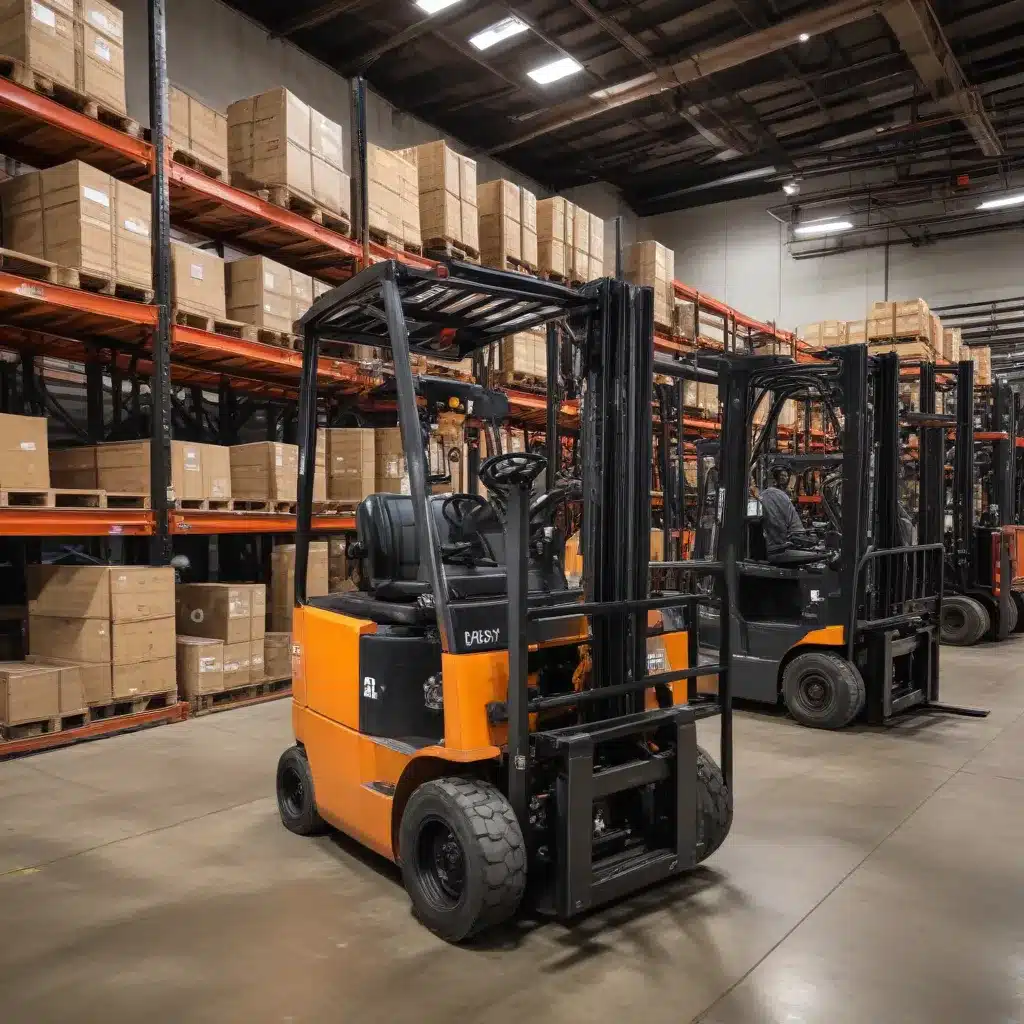
The Importance of Forklift Maintenance in Warehouse Operations
Efficient warehouse operations are crucial for businesses across industries, from distribution to manufacturing and food processing. The smooth functioning of a warehouse relies heavily on the proper management of equipment, particularly forklifts, which are a fundamental part of material handling. Traditional maintenance practices often follow a reactive approach, addressing issues only when they arise, leading to costly repairs, unexpected downtime, and decreased productivity. However, the emergence of predictive maintenance has revolutionized equipment lifecycle management, enabling businesses to optimize operations, increase efficiency, and reduce costs.
HCO Innovations, a leading management consulting firm specializing in warehouse optimization and forklift fleet management, understands the importance of predictive maintenance in achieving operational excellence. Predictive maintenance involves using advanced technologies and data analytics to monitor the condition of equipment in real-time, allowing for the early detection of potential issues. By utilizing cutting-edge sensors, data collection systems, and artificial intelligence algorithms, businesses can collect data on various parameters such as temperature, vibration, fluid levels, and performance indicators. This data is then analyzed to identify patterns, anomalies, and potential failures. With this valuable insight, maintenance teams can proactively schedule repairs and preventive maintenance, minimizing downtime and maximizing equipment availability.
Benefits of Implementing Predictive Maintenance
Implementing a predictive maintenance strategy offers numerous benefits for businesses in warehouse operations:
-
Increased Equipment Uptime: By proactively addressing potential issues before they lead to breakdowns, predictive maintenance ensures that forklifts and other material handling equipment (MHE) spend more time in operation, improving overall productivity and efficiency.
-
Reduced Maintenance Costs: Predictive maintenance helps avoid costly reactive repairs by addressing problems early, when they are less expensive to fix. It also enables better planning and optimization of maintenance activities, resulting in significant cost savings.
-
Improved Safety: By identifying and addressing potential safety hazards in advance, predictive maintenance helps create a safer working environment for operators and other warehouse personnel.
-
Enhanced Asset Utilization: With real-time monitoring and data-driven insights, businesses can optimize the use of their forklift fleet and other MHE, ensuring that assets are deployed effectively to meet operational demands.
-
Extended Equipment Lifespan: Proper maintenance and care extend the useful life of forklifts and other equipment, reducing the need for premature replacements and contributing to overall cost savings.
-
Better Maintenance Planning: Predictive maintenance provides valuable data and insights that enable warehouse managers to plan maintenance activities more effectively, ensuring the right resources are available at the right time.
Implementing a Predictive Maintenance Strategy
Implementing a predictive maintenance strategy involves several key steps:
-
Assess Current Maintenance Practices: Conduct a thorough evaluation of your existing maintenance program, identifying areas for improvement and opportunities to leverage predictive maintenance technologies.
-
Collect and Analyze Equipment Data: Install sensors and monitoring systems to gather real-time data on the performance and condition of your forklift fleet and other MHE. Utilize data analytics to identify patterns and predict potential failures.
-
Develop a Predictive Maintenance Plan: Based on the data collected, create a comprehensive maintenance plan that focuses on proactive, preventive, and predictive maintenance activities. Establish key performance indicators (KPIs) to measure the success of your predictive maintenance strategy.
-
Integrate with Maintenance Management Systems: Seamlessly integrate your predictive maintenance data and insights with your existing maintenance management software or Computerized Maintenance Management System (CMMS) to streamline operations and decision-making.
-
Train and Empower Maintenance Teams: Ensure your maintenance personnel are equipped with the necessary skills and knowledge to effectively interpret and act on the data provided by the predictive maintenance system.
-
Continuously Optimize and Refine: Regularly review the performance of your predictive maintenance strategy, making adjustments and improvements to enhance its effectiveness over time.
The Role of HCO Innovations in Implementing Predictive Maintenance
HCO Innovations has been at the forefront of implementing predictive maintenance solutions for its clients. Leveraging their expertise in warehouse optimization and forklift fleet management, they provide comprehensive services that enable businesses to enhance their operational efficiency and achieve significant cost reductions.
By partnering with HCO Innovations, businesses can benefit from a collaborative approach that combines advanced cost-tracking software with a “boots on the ground” consulting approach. Their team of experts conducts warehouse layout evaluations, safety assessments, and offers turnkey maintenance solutions tailored to the specific needs of each client.
HCO Innovations’ predictive maintenance solutions empower businesses to make informed decisions regarding maintenance activities, resulting in increased uptime, reduced costs, and optimized warehouse operations. Through real-time monitoring, data analysis, and predictive maintenance planning, HCO Innovations helps clients maximize the efficiency and productivity of their forklift fleets and other MHE.
The Future of Forklift Fleet Maintenance
As technology continues to advance, the future of equipment lifecycle management holds even greater promise. With the integration of Internet of Things (IoT) devices and advanced analytics, businesses can further optimize their maintenance practices. IoT devices can provide real-time feedback and diagnostics on equipment performance, remotely monitoring critical parameters. This enables businesses to assess equipment conditions and performance from anywhere, anytime, and make data-driven decisions accordingly.
Furthermore, machine learning algorithms can continuously learn from data patterns and provide increasingly accurate predictions regarding equipment failures. This facilitates proactive maintenance planning, reducing downtime and maximizing operational efficiency.
With the rapid advancements in technology and the expertise of consulting firms like HCO Innovations, predictive maintenance is set to revolutionize equipment lifecycle management. Businesses that embrace this approach can gain a competitive edge by maximizing their operational efficiency and reducing material handling costs.
Conclusion
Predictive maintenance offers significant benefits for businesses in warehouse operations. By utilizing advanced technologies and data analysis, businesses can proactively address potential equipment failures, reduce costs, increase uptime, and improve safety. Implementing a predictive maintenance strategy, with the guidance of experienced consulting firms like HCO Innovations, enables businesses to optimize their equipment lifecycle management and enhance overall operational efficiency.
To learn more about how HCO Innovations can help your organization implement a successful predictive maintenance strategy for your forklift fleet and other material handling equipment, visit their website at www.forkliftreviews.com.

